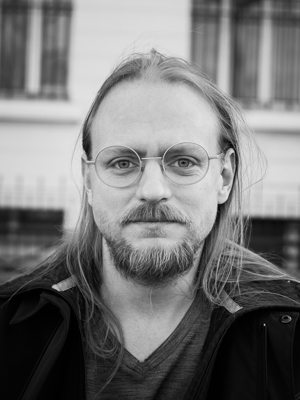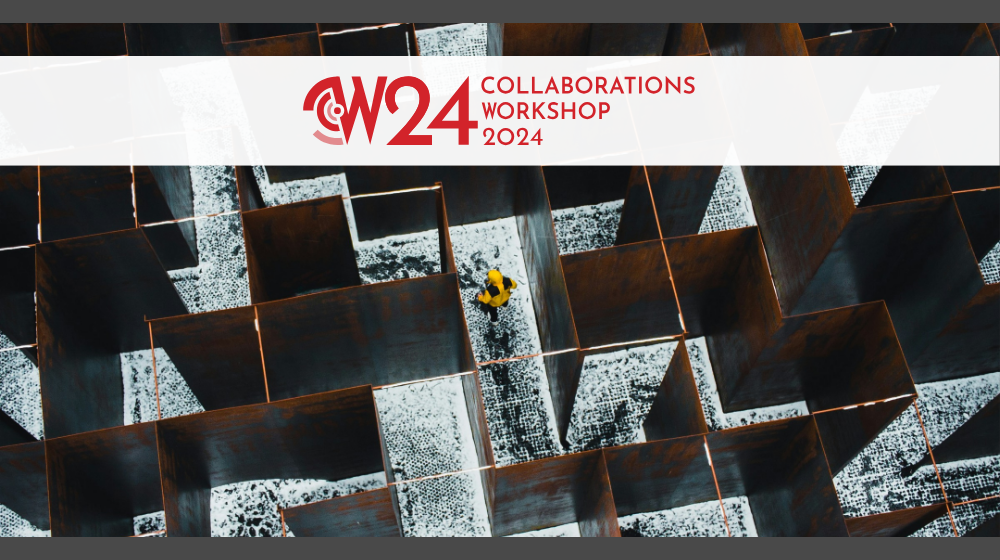So, you are a Research Software Engineer or a technical person. You are interested in how data is produced and in issues around data quality, coverage, representativity, or bias, to name a few. More likely, you may even be interested in the assumptions that are made while working with data and the world-views that are encapsulated in these processes. Moreover, you have a series of technical skills that you’ve applied before in other contexts, such as developing tools or manipulating data, and you may have a preference for interdisciplinary research and working with others. You’ve heard about citizen science approaches and, unsurprisingly, you’re attracted by their potential to produce novel, high-quality data while being inclusive and reducing bias. You want to use your skills and expertise to contribute to an existing project or even initiate a new one.
Regretfully, reality is way more complex than it seems. You soon notice that, pretty much in the same way that there are not two RSEs that are the same, there are multiple ways citizen science can take place. What is more: the actors involved can differ enormously and, to make things worse, you notice that some people may have more than one role simultaneously! Understandably, you’re lost and start to wonder what you are doing in a process like that or what is expected from you. Fear not because in this blog post we’ll guide you through this process. We’ll do so by explaining what citizen science is and the different roles involved. We will also delve into how RSEs fit in this maze and the benefits of involving RSEs in projects like these. Last, but not least, we will give you some advice or tips for any RSE who wants to be involved in a citizen science project.
What’s Citizen science, then? Why does it matter?
Citizen science is a term used for a vast set of different practices across a similarly wide set of scientific domains. This can range from crowdsourcing the collection or processing of data to fully co-creating research projects with a community from start to finish through participatory or community-based action research. Regardless of where on this spectrum a citizen science project sits, what unites them all is the engagement of volunteers in the process of doing science. Two famous crowdsourcing examples are iNaturalist and Zooniverse. The former is an online platform for collecting a large database of geo-referenced natural observations of animals and plants. The latter is a large-scale platform for the processing of data, e.g. annotating images or videos, transcription texts or other microtasks. On the other end of the spectrum, projects like Making Sense co-create pollution monitoring solutions from the start, including the monitoring hardware, to finish.
At this point, note that these examples are more than being a mere platform where citizens contribute to providing data, which can be considered problematic for some. Instead, volunteers were also involved in their co-design process, playing an active role in defining and validating the tool and, therefore, influencing the process. This is more than a subtlety and highlights two key challenges of citizen science projects. The first has to do with the many reasons to engage in citizen science: Large groups of volunteers allow the collection and processing of huge amounts of data, and co-creation approaches can ensure that research software fits user needs and considers data protection and other ethical requirements of participants. The second has to do with the role played by participants, especially acknowledging that there are many types of participants and ways of contributing.
Roles and contributions in Citizen Science projects
Like in any participatory process, citizen science can be complex in terms of assigning roles: on the one hand, it’s important to ensure the project is appropriately resourced and the roles are sufficiently well-defined that there is accountability and progress can be sustained. On the other hand, leaving roles open to participatory contributors is of intrinsic value to participatory research, as it is helpful to remove barriers and diminish hierarchies. There should be minimal gatekeeping and maximal upskilling and onboarding opportunities. With this in mind, some of the core roles are:
- RSE: people with the technical knowledge and skill set to make and maintain the tools needed to operationalise citizen science. For a citizen science project, it is useful to come to it with an open mind and curiosity about the community you will be working with. It can be immensely rewarding to work with the people who will ultimately benefit from your work and it is an excellent opportunity for bidirectional learning.
- Community manager/facilitator: a community manager is responsible for supporting community members, facilitating meetings, onboarding, and doing outreach. They should focus on creating an inclusive and welcoming research environment so that people feel comfortable joining in with tasks or contributing to decision-making processes. This is an important role as inclusion cannot be taken for granted: there should be an active process of dismantling barriers and supporting diverse inclusion, and this takes time, skill, and resources.
- Project manager or PI: someone with an overarching strategic view of the project, who is able to manage resources, oversee critical tasks, bid for funds and ensure the project makes progress and reaches goals.
- Researchers: people with a scientific or academic background to write papers, disseminate findings in academic settings, and ensure that the participatory work has an impact.
- Designers: people with knowledge of design and translating user needs/preferences into tangible outputs. User testing is also critical.
- Writers: this could include writing for a website if you are creating an online citizen science platform, but also writing blog posts, disseminating findings, newsletters, and articles, for instance.
- Community members/volunteers: the core of a citizen science project. Community members must be equally recognised as other members of the project and have direction-setting and decision-making powers. This is a slippery category, as this group includes many people with overlapping skills, so creating the space and support for citizen scientists to be involved in all aspects of the project is ideal! While this can benefit both citizen scientists and the whole research team, it can be more complex than more conventional projects, as voluntary input can be harder to manage in terms of keeping accountability. Conversely, it can add a huge amount of additional insight and skills to the project as a whole. Where possible, find routes to reimburse citizen scientists/participatory researchers for their time. Conversely, if funds are not available, this could also be in the form of opportunities, upskilling, and reflecting their priorities and needs in the outcomes of the project.
That said, the barriers between roles are more porous than it may seem and some roles may overlap with others (i.e. the writer role may be done by a researcher or even a community member, and there may be researchers in the volunteers who can contribute to the academic findings, or designers, or coders), but this is still a useful and frequent categorisation.
The value added by RSEs in citizen science projects
We already covered what RSEs can do in citizen science projects, but what are the real benefits of involving them? In other words, how can RSE skills on a meta-level (i.e., technical skills; flexibly adapt these to different settings) bring value to these types of projects?
One of the most obvious but nevertheless critical, is that many citizen science projects are fundamentally impractical without software development, and others are substantially harder. As an example, it would seem tempting (and even sensible) to use existing tools like Google Forms, spreadsheets, or hand-annotation, but using them in this context can often be clunky, scale poorly, or otherwise impede research. Conversely, RSEs can either develop the ad hoc tools needed to collect, process and share data or to interact with existing ones and streamline workflows. As an example, for projects that make use of an existing platform like the Zooniverse, RSEs can help with defining the data flows into and out of the platform, and ensuring that these are automated and repeatable.
This is particularly relevant in some projects, where non-technical audiences can have a high barrier to participant entry if the tools available are not a good fit for the project. Therefore, bespoke platform development can lead to more participation, as well as better informed participation.
Another way RSEs can add value to citizen science projects has to do with their expertise in open-source development techniques and open science best practices. Many of the working practices that we use in research software engineering, particularly in open-source software development, can help with citizen science projects. A clear example is that making information explicit and easily findable helps a range of people to find the project and participate. The most useful software projects have documentation like README files, notes about common usage patterns, advice for extension, etc. Using these helps us ensure that all decisions are made in the open and that all project participants have access to the evidence used to make project decisions. These are good practices to carry into citizen science projects.
And last, but not least, it’s worth noting that RSEs can act as an ‘informed layperson’ during the project design process. This is, a person with a research background but without the domain background of the researchers, who is able to raise flags and issues that might otherwise go unnoticed until deployment.
Final considerations
By now, you will have a better understanding of what citizen-science projects are, how RSEs fit in the different roles involved in these types of projects and what are the benefits of having them involved.
Hopefully, as an RSE you will be even more eager to join, or initiate, a citizen-science project, so if that’s the case, we will end up with giving some final considerations that can be useful in that context:
- Understand the different types of citizen framework projects there are and where the proposed project fits. It can change from 1 type to another over time.
- Don’t overengineer the framework as community participants may not be comfortable with RSE tools, including GitHub, and may want many ways of engaging. Examples given have included GitHub, emails and collaborative documents, all as ways of collaborating on the same project.
- Understand the GDPR regulations you need to work within.
- Funding and grant applications - how will the project be developed in the first instance, and then maintained?
- What are the expectations of the project from the different stakeholders - the community most importantly, but the RSEs, the funders, and other collaborators?
- Community involvement - how will the community involvement work? Meetings? Real or virtual? Synchronous or asynchronous? The community may have different ways of wanting to engage
Authors |
Carlos Cámara-MenoyoCentre for Interdisciplinary Methodologies University of Warwick carlos.camara@warwick.ac.uk ORCID: 0000-0002-9378-0549 Mastodon: @ccamara@scholar.social |
Bastian Greshake TzovarasThe Alan Turing Institute bgreshake@googlemail.com ORCID: 0000-0002-9925-9623 Mastodon: @gedankenstuecke@scholar.social |
Georgia AitkenheadThe Alan Turing Institute gaitkenhead@turing.ac.uk |
Rachel AlcraftInstitute of Cancer Research rachel.alcraft@icr.ac.uk ORCID: 0000-0003-2674-6321 |
Nicky NicolsonRoyal Botanic Gardens, Kew n.nicolson@kew.org ORCID: 0000-0003-3700-48 |
Original image by Dan Asaki on Unsplash



